Awk Print From Column To End
The “awk” command is a powerful text processing tool that allows for data extraction and manipulation based on patterns. It is particularly useful for working with structured data, such as tables or CSV files. “awk” operates on each line of input and performs actions specified by the user.
Understanding the “print” Function in awk
The “print” function in awk is used to display output. It takes one or more arguments, which can be strings, variables, or expressions, and prints them to the standard output. By default, “print” separates its arguments with a space and finishes with a new line.
Accessing Entire Rows with awk’s print Command
By default, the “print” command in awk prints the entire input line. For example, if we have a file containing the following data:
“`
John Doe 25
Jane Smith 30
“`
Running the command `awk ‘{print}’ file.txt` will produce the same output as the input:
“`
John Doe 25
Jane Smith 30
“`
Introduction to Columns in awk
In awk, columns refer to the individual fields or sections of a line separated by a delimiter. By default, awk treats spaces and tabs as delimiters, so each word in a line is considered a separate column. You can access specific columns using the dollar sign ($) followed by the column number.
Printing a Specific Column in awk
To print a specific column in awk, you can use the following syntax: `awk ‘{print $n}’ file.txt`, where ‘n’ represents the column number. For example, if we have the same data as before:
“`
John Doe 25
Jane Smith 30
“`
Running the command `awk ‘{print $2}’ file.txt` would output:
“`
Doe
Smith
“`
Printing from a Specific Column to the End using awk’s “print” Command
In awk, you can print columns starting from a specific column number to the end by using a range of columns. The range is specified as `start:end`, where ‘start’ is the column number from which to begin printing, and ‘end’ is left empty to indicate until the end.
For example, if we have the following data:
“`
John Doe 25 New York
Jane Smith 30 Los Angeles
“`
Running the command `awk ‘{print $2″:”$3″:”$4}’ file.txt` would output:
“`
Doe:25:New
Smith:30:Los
“`
Including Delimiters when Printing from Column to End in awk
By default, awk removes the delimiters when printing columns. However, we can include them by specifying the output field separator (OFS) using the “-v” option in awk.
For example, if we have the data:
“`
John Doe 25 New York
Jane Smith 30 Los Angeles
“`
Running the command `awk -v OFS=’:’ ‘{print $2,$3,$4}’ file.txt` would output:
“`
Doe:25:New York
Smith:30:Los Angeles
“`
Utilizing Regular Expressions for More Complex Column Selection in awk
Awk allows for flexible column selection using regular expressions. By specifying a regular expression as the column argument, you can match and print columns that meet specific criteria.
For example, if we have the following data:
“`
John Doe 25
Jane Smith 30
“`
Running the command `awk ‘{print $0~/Doe/}’ file.txt` would only print the line containing the word “Doe”:
“`
John Doe 25
“`
Advanced Techniques for Printing from Column to End in awk
In addition to the basic methods mentioned above, awk provides various advanced techniques for printing columns to the end. These include using loops, variables, and conditional statements to dynamically determine the range of columns to print.
For more complex scenarios, you can combine these techniques with regular expressions to create powerful and customized output.
Real-world Examples and Use Cases for awk’s Column-to-End Printing
Awk’s ability to print columns from a specific column to the end offers numerous possibilities for data manipulation and analysis. Here are a few real-world examples:
1. Awk print except last column: Suppose you want to exclude the last column from your output. You can achieve this by using a range that starts from the first column and ends before the last column.
2. Awk ‘(print last column): If you want to print only the last column of each line, you can use a range that starts from the last column and ends at the end of the line.
3. Awk ‘( print column): To print only a specific column, you can use a range that includes only that column.
4. Awk print multiple columns: By specifying multiple columns separated by a comma, you can print multiple columns within a range.
5. Awk print format: Awk provides formatting options to control the output format. This allows you to specify the width, precision, padding, and alignment of each column.
6. Awk ‘(print $1): To print a specific column, you can use the column number as an argument within the range.
7. Awk print space: By overriding the output field separator (OFS) and using the space character, you can control the spacing between columns when printing.
8. Awk print except first Columnawk: To exclude the first column from the output, you can use a range that starts from the second column and ends at the end of the line.
These are just a few examples of the many possibilities and combinations that awk offers for printing columns from a specific column to the end. The flexibility of awk allows for efficient data extraction and manipulation, making it a valuable tool for various use cases.
FAQs:
Q: What is the purpose of the “awk” command?
A: The “awk” command is used for text processing, data extraction, and manipulation based on patterns.
Q: How does the “print” function work in awk?
A: The “print” function in awk is used to display output. It takes one or more arguments and prints them to the standard output.
Q: How can I print a specific column in awk?
A: You can use the syntax `awk ‘{print $n}’ file.txt`, where ‘n’ represents the column number, to print a specific column.
Q: How can I print columns from a specific column to the end in awk?
A: By using a range of columns in the print command, you can print columns starting from a specific column number to the end.
Q: Can I include delimiters when printing columns in awk?
A: Yes, by specifying the output field separator (OFS) using the “-v” option in awk, you can include delimiters when printing columns.
Q: Are there advanced techniques for printing columns to the end in awk?
A: Yes, advanced techniques such as loops, variables, and conditional statements can be used to dynamically determine the range of columns to print.
Q: What are some real-world examples of using awk’s column-to-end printing?
A: Real-world examples include excluding the last column, printing only the last column, printing multiple columns, formatting the output, and excluding the first column.
Q: Can awk print columns based on regular expressions?
A: Yes, awk allows for flexible column selection using regular expressions. You can match and print columns that meet specific criteria.
Q: How can I customize the output format when printing columns in awk?
A: Awk provides formatting options to control the output format, allowing you to specify the width, precision, padding, and alignment of each column.
Q: Is awk a powerful tool for data manipulation and analysis?
A: Yes, awk’s flexibility and various features make it a valuable tool for efficient data extraction and manipulation in various use cases.
How To Print Columns Using ‘Awk’ Command
Keywords searched by users: awk print from column to end Awk print except last column, Awk ‘(print last column), Awk ‘( print column), Awk print multiple columns, Awk print format, Awk ‘(print $1), Awk print space, Awk print except first Column
Categories: Top 58 Awk Print From Column To End
See more here: nhanvietluanvan.com
Awk Print Except Last Column
Introduction:
In the world of Unix command-line tools, Awk stands out as a powerful and versatile utility for text processing. Among its many capabilities, the “print” command provides a convenient way to display specific columns of data. However, there are instances when we want to print all columns except the last one. In this article, we will explore how to effectively use the Awk print command to exclude the last column, highlighting its syntax, practical examples, and potential use cases.
Understanding Awk and its Print Command:
Awk is a scripting language primarily designed for handling simple and structured text processing tasks. It operates by scanning and processing file(s) line by line, allowing users to define patterns and corresponding actions to perform on each line. The “print” command is one such action, employed to display selected fields or columns of data.
The syntax of the “print” command in Awk follows a straightforward structure: ‘print
Excluding the Last Column with Awk:
To exclude the last column using Awk’s “print” command, we need to leverage its field separator feature. By specifying the field separator, we can effectively disregard the last column while printing the remaining columns.
“`
awk -F'[separator]’ ‘{ print $1, $2, …, $(NF-1) }’ [input file]
“`
In the above command, `-F'[separator]’` denotes the field separator, which can be a single character or a regular expression. For example, using `’ ‘` would consider whitespace as the separator, while `’,’` would consider commas. `$1, $2, …, $(NF-1)` represents the fields or columns to print, excluding the last one. Finally, `[input file]` indicates the file(s) to process using Awk.
Practical Examples:
Let’s look at some practical examples that demonstrate the usage of Awk’s “print” command to exclude the last column.
Example 1: Print Lines from a CSV File
Suppose we have a simple CSV file called “data.csv”:
“`
Name, Age, Country
John, 25, USA
Emily, 31, UK
David, 42, Australia
“`
Using the following Awk command:
“`
awk -F’,’ ‘{ print $1, $2 }’ data.csv
“`
The output will be:
“`
Name Age
John 25
Emily 31
David 42
“`
Here, we excluded the last column (“Country”) from the printed output.
Example 2: Manipulating Data from Log Files
Assume we have a log file named “access.log” that contains lines with various fields separated by spaces:
“`
192.168.1.1 – – [01/Jan/2022:10:15:00 +0000] “GET /page.html HTTP/1.1” 200 512
192.168.1.2 – – [01/Jan/2022:10:15:05 +0000] “GET /image.jpg HTTP/1.1” 404 0
192.168.1.3 – – [01/Jan/2022:10:15:10 +0000] “POST /submit.php HTTP/1.1” 302 0
“`
To print all fields except the last one, the following Awk command can be used:
“`
awk ‘{ for (i=1; i<=NF-1; i++) print $i }' access.log
```
The output will be:
```
192.168.1.1
-
-
[01/Jan/2022:10:15:00
+0000]
"GET
/page.html
HTTP/1.1"
200
512
192.168.1.2
-
-
[01/Jan/2022:10:15:05
+0000]
"GET
/image.jpg
HTTP/1.1"
404
0
192.168.1.3
-
-
[01/Jan/2022:10:15:10
+0000]
"POST
/submit.php
HTTP/1.1"
302
0
```
Here, each field except the last one is printed as an individual line.
FAQs:
Q1: Can I use a custom string as the field separator?
A1: Yes, you can use `-F'[separator]'` to specify a custom string or a regular expression as the field separator. For instance, `-F':'` will consider colons as separators.
Q2: How can I print all columns except the second last one?
A2: Simply modify the command to `'{ print $1, $2, ..., $(NF-2) }'`, excluding the desired field.
Q3: Is it possible to combine multiple field separator patterns?
A3: Yes, you can use a regular expression like `-F'[,;]'` to treat both comma and semicolon as field separators.
Q4: Can I apply the "print except last column" concept to files with irregular column lengths?
A4: Absolutely! The Awk command intelligently handles irregular column lengths, adjusting to each line's structure.
Conclusion:
Awk's "print" command empowers Unix users with a powerful mechanism to extract specific columns from text data. By exploiting the field separator feature, we can easily exclude the last column while printing the rest. This article has provided a thorough understanding of how to use Awk's "print" command to omit the final column, along with practical examples and FAQs that cover various scenarios. By utilizing this capability, you can efficiently manipulate and process text data to suit your specific requirements.
Awk ‘(Print Last Column)
To illustrate the usage of Awk in printing the last column, let’s consider an example. Suppose we have a file called “data.txt” with the following contents:
“`
John Doe,25,Male,New York
Jane Smith,38,Female,San Francisco
Michael Johnson,42,Male,Boston
“`
We want to extract and print the last column, which in this case represents the city. To achieve this, we can use the Awk command with the delimiter set to a comma, as follows:
“`
awk -F’,’ ‘{print $NF}’ data.txt
“`
The “-F” flag is used to specify the field separator, in this case, a comma. The “$NF” variable represents the last column in the line. By executing this command, the output will be:
“`
New York
San Francisco
Boston
“`
Awk automatically splits each line into fields based on the given delimiter and assigns them to variables $1, $2, $3, and so on. The variable “$NF” is a special variable that represents the last field of the record.
Now that we have seen a practical example of how to print the last column using Awk, let’s delve deeper into the topic by addressing some frequently asked questions:
**Q: Can Awk handle different field separators?**
A: Absolutely! Awk is highly flexible when it comes to field separators. You can specify any character or regular expression as a field separator using the “-F” flag. For example, if the fields in your file are separated by tabs instead of commas, you can use the following command:
“`
awk -F’\t’ ‘{print $NF}’ data.txt
“`
**Q: What if the number of fields in each line is not constant?**
A: Awk can handle variable-length records gracefully. We can still print the last column by using the “$NF” variable, which always represents the last field of the record, regardless of the number of fields. Awk automatically adjusts to the given input on a line-by-line basis.
**Q: How can I print the last column of multiple files?**
A: Awk allows you to process multiple files simultaneously. Simply provide the file names as additional arguments after the Awk script. For instance:
“`
awk -F’,’ ‘{print $NF}’ file1.txt file2.txt
“`
This command will print the last column of both “file1.txt” and “file2.txt.”
**Q: Can I print multiple columns instead of just the last column?**
A: Definitely! Awk provides great flexibility in selecting and printing multiple columns. To achieve this, specify the desired columns using the “$” notation, separated by commas. For example, to print both the first and last columns, you can use the following command:
“`
awk -F’,’ ‘{print $1, $NF}’ data.txt
“`
This will produce the following output:
“`
John Doe New York
Jane Smith San Francisco
Michael Johnson Boston
“`
**Q: How can I print the last column without specifying the field separator?**
A: Awk automatically splits each line into fields using whitespace as the default field separator. Therefore, if your text file has columns separated by spaces, you can skip specifying the field separator altogether:
“`
awk ‘{print $NF}’ data.txt
“`
By default, Awk treats consecutive whitespace characters as a single delimiter.
**Q: Can I modify the output format of the last column?**
A: Yes, you can format the output using the built-in formatting features of Awk. For example, to print the last column enclosed in double quotation marks, you can use the following command:
“`
awk -F’,’ ‘{printf “\”%s\”\n”, $NF}’ data.txt
“`
This will result in the following output:
“`
“New York”
“San Francisco”
“Boston”
“`
In conclusion, Awk is an incredibly versatile tool for text processing and has proven itself as an invaluable ally for developers and system administrators. By utilizing its concise syntax, we can easily extract specific columns from text files or input streams. Printing the last column is just one of the many powerful functionalities that Awk offers. By exploring and mastering Awk’s capabilities, you can enhance your text-processing workflow and efficiently manipulate structured text data.
Awk ‘( Print Column)
In the realm of text processing, Awk is a powerful and flexible tool that has gained immense popularity among programmers and system administrators. One of its most commonly used functions is the ability to isolate and print specific columns of data. This article will delve into the world of Awk’s print column feature, exploring its various applications, syntax, and providing helpful examples.
## Understanding Awk and its Print Column Feature
Awk is a scripting language designed for manipulating data and generating reports. It excels at handling structured text files, particularly those organized in rows and columns. When working with such files, extracting specific columns of information is a common requirement. Awk’s print column feature makes this task straightforward and efficient.
By using the print column functionality, programmers can filter, format, and selectively display columns of data from input sources. This is achieved through the utilization of the “print” command and the ability to specify the desired column(s) to be printed. Awk allows users to access columns directly using either column numbers or column names, enhancing flexibility and readability.
## Syntax and Usage
The general syntax for using Awk’s print column feature is as follows:
“`
awk ‘{print $column_number}’ filename
“`
To print multiple columns, separate their respective column numbers with commas:
“`
awk ‘{print $column_number_1, $column_number_2}’ filename
“`
Alternatively, if the file contains headers, column names can be used instead of column numbers:
“`
awk ‘{print $column_name}’ filename
“`
By default, Awk treats each space or tab as a column separator. However, this can be adjusted using the “-F” flag, followed by the desired delimiter. For example, to use a comma as the delimiter:
“`
awk -F ‘,’ ‘{print $column_number}’ filename
“`
## Practical Examples
To better understand the print column feature of Awk, let’s explore some practical examples.
### Example 1:
Consider a CSV file named “data.csv” with the following format:
“`
Name, Age, City
John, 25, New York
Jane, 30, London
Mark, 40, Paris
“`
To print the “Name” column, the following command is used:
“`
awk -F ‘,’ ‘{print $1}’ data.csv
“`
The output will be:
“`
Name
John
Jane
Mark
“`
### Example 2:
Imagine a log file named “access.log,” where each line represents a user’s access to a server. The lines are structured as follows:
“`
timestamp IP_address username status_code
“`
To display the IP addresses and status codes, the following command is utilized:
“`
awk ‘{print $2, $4}’ access.log
“`
This will produce the desired output:
“`
IP_address status_code
192.168.1.100 200
192.168.1.101 404
192.168.1.102 200
“`
## FAQs
Q: Can I print columns in a specific order using Awk’s print column feature?
A: Yes, by specifying the desired column numbers or names in the desired order, Awk will print them accordingly.
Q: How can I skip the header line when printing columns using Awk?
A: One way to do this is by using the “NR” built-in variable that represents the record number. When NR is equal to 1, we skip printing the line. Here’s an example:
“`
awk ‘NR>1 {print $column_number}’ filename
“`
Q: Can I use Awk to filter rows based on specific column values?
A: Yes, Awk provides powerful conditional statements that can be used to filter rows based on specific column values. For example, to filter rows where the value in the second column is equal to “example,” the following command can be used:
“`
awk ‘$2 == “example” {print}’ filename
“`
## Conclusion
Awk’s print column feature is a versatile tool that allows for efficient extraction and display of specific columns from text files. By mastering the syntax and adapting it to match specific requirements, programmers and system administrators can streamline their text processing tasks. Whether working with CSV files, log files, or any other structured text data, Awk’s print column feature offers a powerful solution.
Images related to the topic awk print from column to end
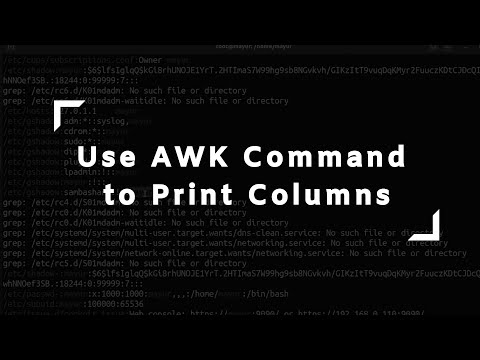
Found 26 images related to awk print from column to end theme
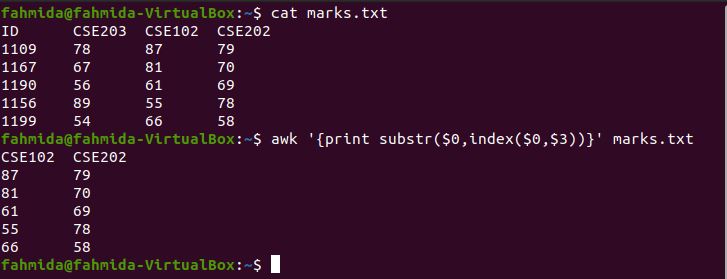
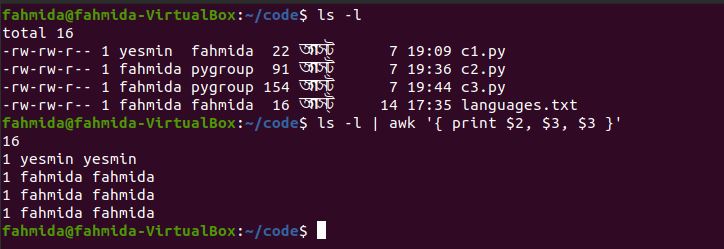












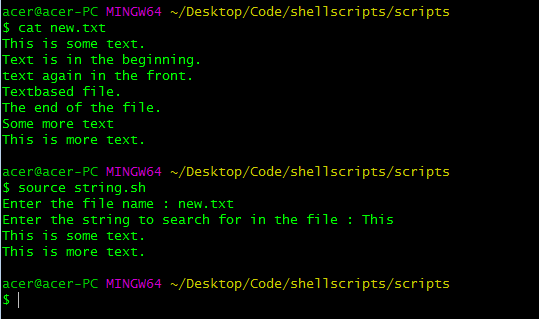

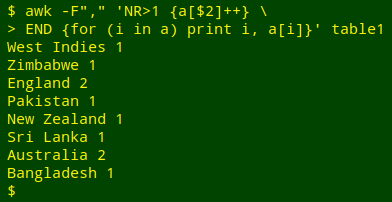






Article link: awk print from column to end.
Learn more about the topic awk print from column to end.
- How to print third column to last column? – linux – Stack Overflow
- awk print from nth column to last – Unix & Linux Stack Exchange
- [SOLVED] awk – from field n to end of line – LinuxQuestions.org
- awk to print all columns from the nth to the last – Edureka
- How to print from specific column to last in Linux command line
- Printing awk Output in the Same Line | Baeldung on Linux
- awk | Training-modules – GitHub Pages
- AWK command in Linux/Unix – DigitalOcean
See more: nhanvietluanvan.com/luat-hoc